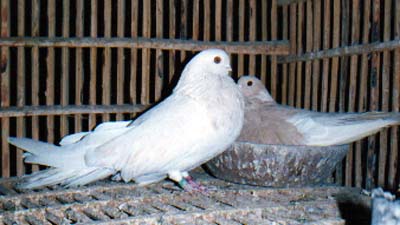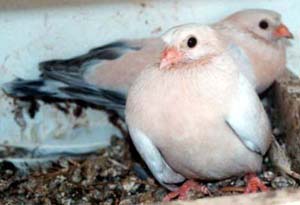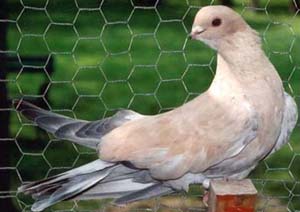November News Letter
Malt protocol:
This is the most critical part of the malting season. As the feather storm has abated, the birds primaries are noted to emerge tenderly underneath a fresh and heavy coat of feathers. If you become tempted to fly your old birds, those brittle feathers will snip and break. A flying bird will become incapacitated for the rest of the season.
This is noticeable in Swifts more than other breeds and that is because of their long wings that are naturally accompanied by long feathers. All birds therefore are kept until the feathers are cured. The end of November is usually the time for all feathers to stiffen and become capable of taking the hard wing strokes without breaking. However you must check each bird individually before releasing them into the air since the degree of maturity varies among the birds.
Hawk activity:
Locking the birds in time upon starting to malt is as important issue as releasing them in time when they have finished malting. It works well for us in the western USA, since that coincide with the Hawks migratory pattern. Hawks are on the move south starting late August and by that time all the old birds should be locked. Any delay of locking old bird will make them an easy prey. Weather differs depending on your geographical location, and I certainly would like to know how fanciers in the northern states or Europe deal with that. By end of November the birds are ready to fly and usually the majority of hawks have moved south to Mexico with the exception of few evil ones, that are left to take, few unfortunate birds.
More on Yellows:
Let's review more on the yellow color of the Egyptian birds:
Two different groups are currently carrying the yellow color among the ES, the first group is identical in looks to the Ahmar Gohzar. In that they have broad beak and heavy wattle and it's not the subject of discussion.
Our subject is the Yellow Rehani as follows by pictures:

A pure white version with bull eyes is an indication of missing the (r//r). Facial Markings:
One can mask the appearance of a wolf by dressing it in a sheep clothes, but soon every one will realize. We all have our phenotypic markings that makes us what we are. A pure form of Asfar has a grainy and miniature beak. The forehead is conspicuously elevated. A convex (dipped) appearance as the beak meets forehead is formed. The eyes are very light pearl. Appear white because it is devoid from red pigmentation.


Kawanky and Kamooney:
To complete this picture we must talk about another controversial subgroup. This group is rather yellow with an opal (recessive autosomal gene) and a spread gene. The opal color is uniformly distributed over a hue of yellow. While the Egyptian book of standard mention this group, the Egyptian fancier consider it another shuffling of colors. For more on the subject, please review the Rehani standards.
Crossing other groups to the Yellows:
Reds: have blunt, heavy, long beaks and inclined downward. Their wattle is large and coarse.
Safis: while might offer a short beak, it has a concave or complete sweep. Their beaks are blunt and will broaden a fine grainy beak of a Yellow. They have a different posture from the Rehanis.
Blue Velvets: while might be compatible for one generation, they will change the eye color to orange and introduce grizzle factor. Many if not all Blue Velvets have deviated from the true Rehani standards, even in Egypt, as I will continue on that in another month.
Thanks for Al hansen and Mark Orme who helped me to answer several aspects
about the Yellows by supplying the second and third picture in this issue.
If it wasn't for the pictures this wouldn't have been possible.
You may mail or e-mail any number of pictures. Your name will be withheld
unless otherwise indicated. Pictures of mixed grouping are more challenging
than pure one. It's all open for positive discussion.
Viewing is free. Those who devote their time to send pictures are not
getting much in return. It is done for the love of the hobby. But ethically
you must contribute with the rest for all of us to learn. Take advantage
of this great tool, the Internet.